Intelligent Shipping Orchestration Platform
AI-driven shipping process automation that helped our customer cut manual efforts by nearly 64%
ABOUT the project
- Client:
- Global logistics and delivery enterprise
- Location:
-

Sweden
- Company Size:
- 5000+ Employees
- Industry:
- Logistics & Transportation
- Solution:
- Custom Software Development
Services:
Leobit helped a global logistics enterprise automate its end-to-end shipping operations using AI-driven tools and custom software development. The solution included shipment tracking, automated documentation, intelligent carrier selection, and multi-agent AI systems.
When we started, our automation was purely rule-based—if X happened, do Y. But with agentic AI, the system can actually think ahead. It notices delays, suggests alternative routes, and coordinates actions across different teams. It’s not just following rules anymore, it’s making data-driven smart decisions on its own.

Customer
The client is a global delivery company serving both B2B and B2C customers. Their services include parcel delivery, freight forwarding, customs clearance, and international logistics. With operations covering both domestic and international markets, the company manages thousands of shipments daily, ranging from small consumer parcels to large-scale commercial consignments.
Business Challenge
A significant part of our customer’s business involves managing international and domestic shipments. The company struggled with fragmented processes, manual documentation, and a lack of real-time visibility into shipment status. With growing competition and increasing customer expectations for speed and transparency, the company needed to modernize its shipping operations and reduce inefficiencies. The goal was to build an integrated platform that automates the shipping lifecycle, from order creation and document processing to route optimization, carrier selection, and customer communication.
Why Leobit
The client selected Leobit after a thorough and competitive RFP process designed to identify a technology partner capable of handling both immediate modernization needs and long-term innovation goals. During this evaluation, Leobit demonstrated proven expertise in legacy software modernization and showcased successful projects where outdated, fragmented systems were transformed into scalable, cloud-based platforms. What made Leobit stand out was also our experience with logistics and enterprise-level automation.
Project
in detail
Leobit has been working with the client for over five years and supported their digital transformation journey. During this time, we migrated the platform from on-premises infrastructure to Azure cloud, developed new features, and implemented non-AI automation. For the last 1,5 years, we’ve been working on AI agents and agentic automation.
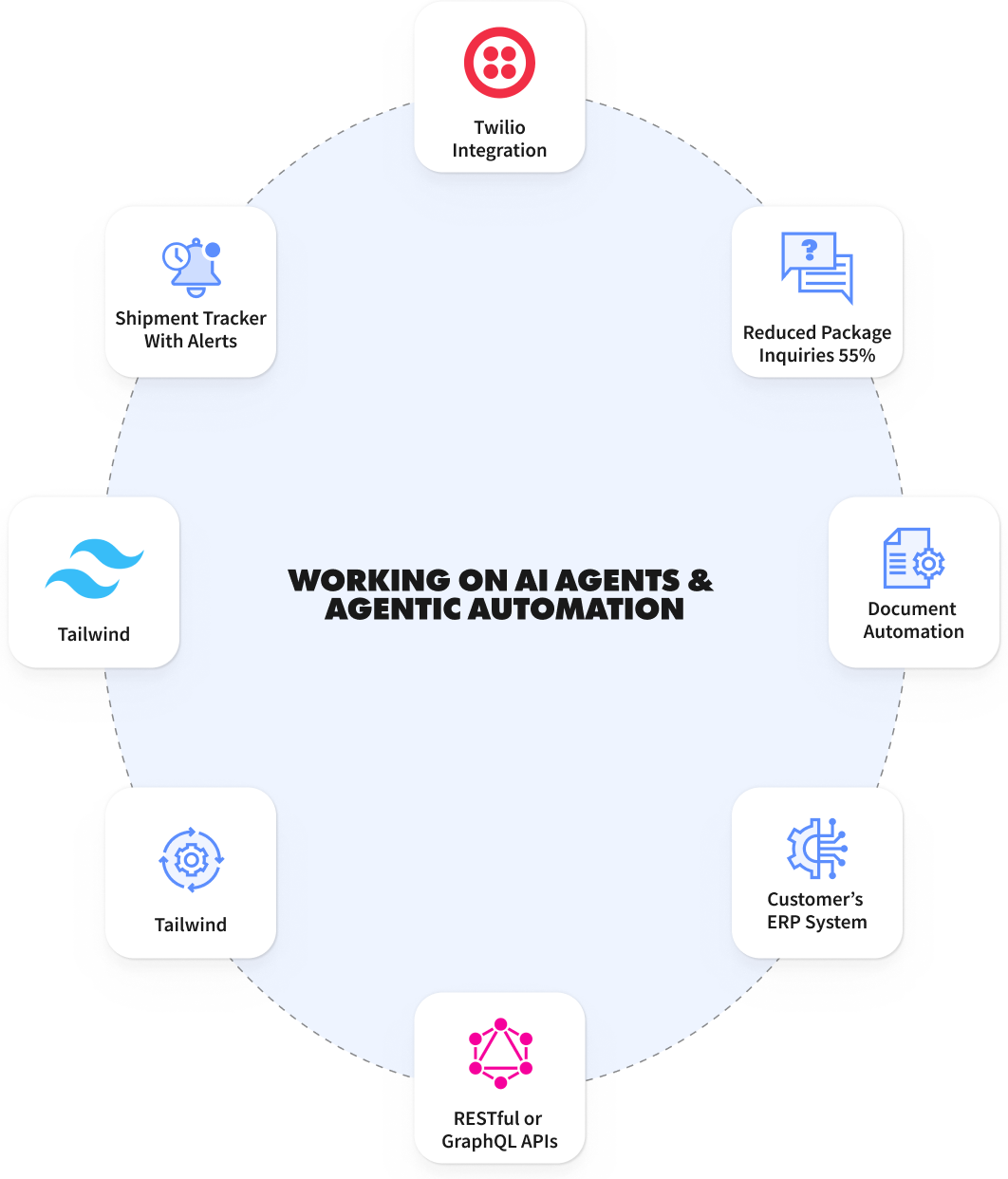

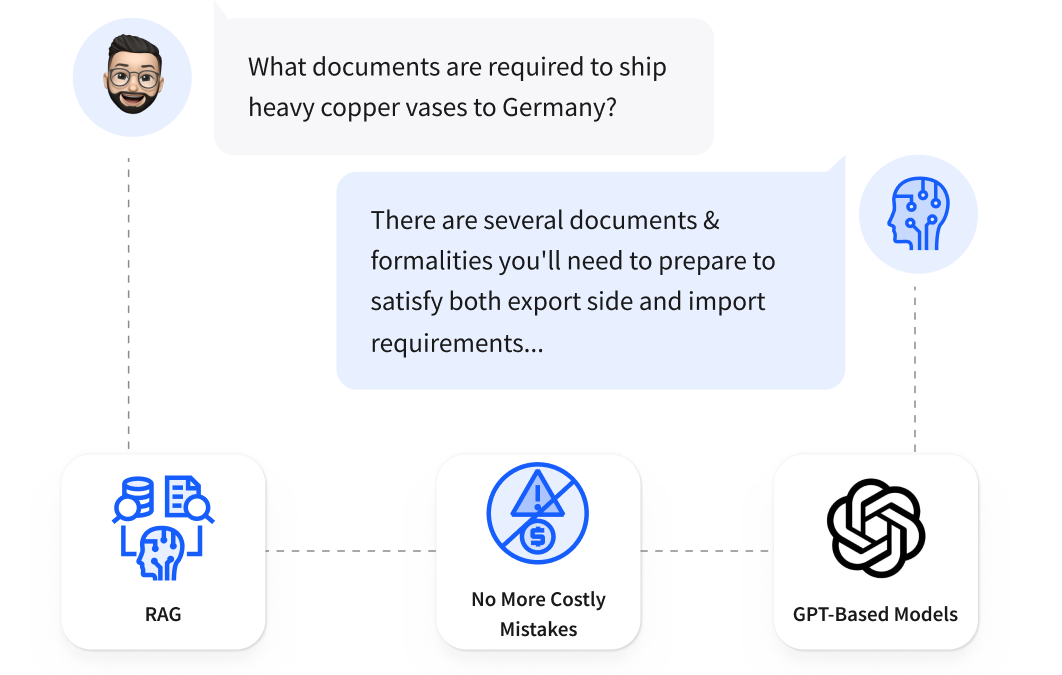
Transition to AI-driven automation
As shipment volumes grew, the client’s logistics network became too complex for static, rule-based automation. Exceptions such as customs delays, regulatory changes, and carrier performance variations required a more adaptive system. To solve this challenge, Leobit began introducing AI into the platform about a year and a half ago.
The first step was the deployment of a retrieval-augmented generation (RAG) system. Employees often had problems navigating customs regulations and international shipping requirements, which frequently led to costly mistakes. With the new system, they could ask natural language questions such as, “What documents are required to ship heavy copper vases to Germany?”
The solution retrieved relevant regulations from a curated knowledge base and used GPT-based models, orchestrated through LangChain, to generate accurate and context-specific answers. A vector database supported semantic search to ensure that responses were always grounded in reliable sources.
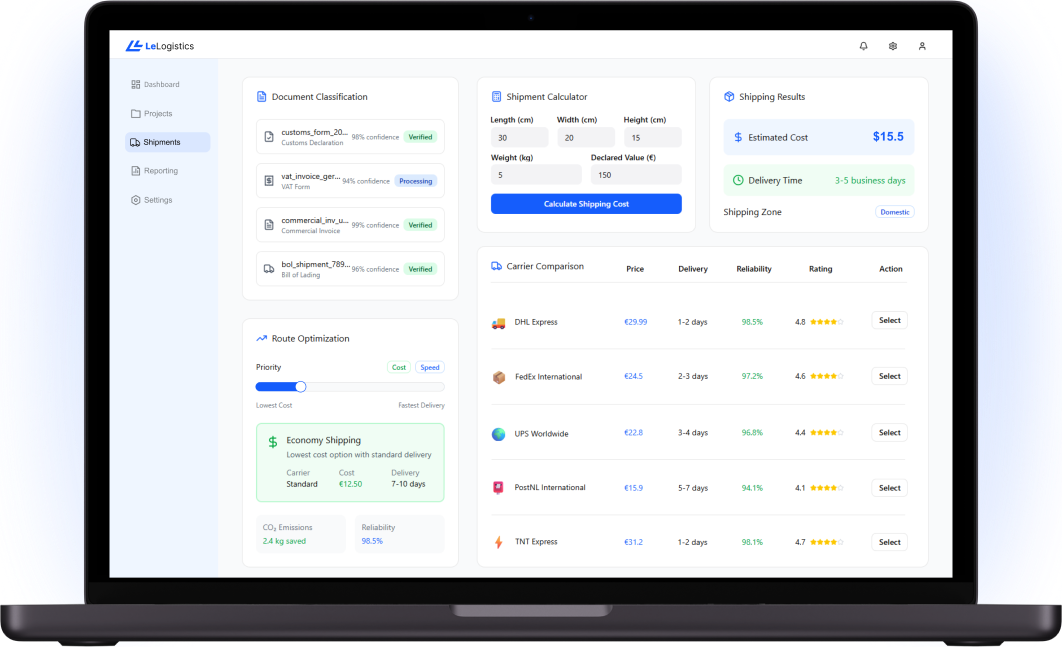
AI-powered carrier selection
Leobit trained document classification models to automatically recognize customs declarations, VAT forms, and invoices, which cut manual review time by nearly 64%. Leobit also built a price calculator that combined shipment dimensions, weight, and declared value with carrier data to estimate costs and delivery times. Additionally, Leobit implemented an optimization layer that recommended the most efficient balance between cost and speed.
Thanks to the carrier integrations already established during the early years of the partnership, Leobit upgraded the platform to support fully automated carrier selection. The AI engine not only compared prices and estimated delivery times, but also evaluated historical carrier performance, service reliability, and customer preferences. By introducing this adaptive decision-making process, Leobit enabled the client to move far beyond the limitations of traditional rule-based automation.
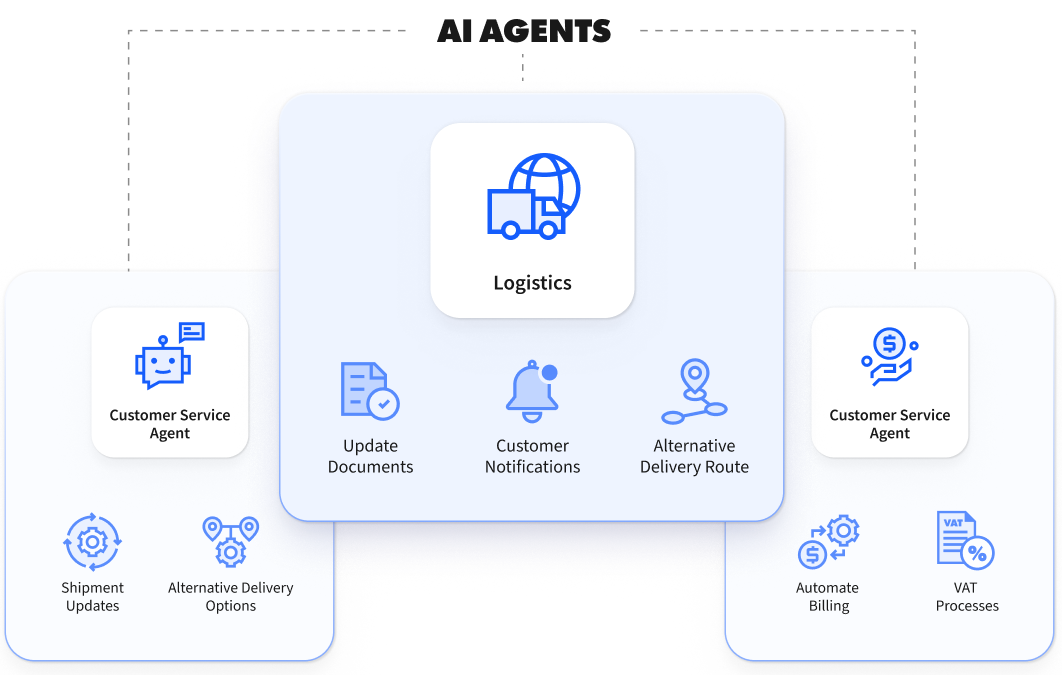
Building agentic AI systems
The most transformative stage of the project involved the introduction of AI agents. The first agent we developed focused on logistics. It was designed to dynamically plan and execute workflows. For example, when a shipment encountered a customs delay, the agent could automatically prepare updated documents, notify the customer, and propose an alternative delivery route. This was made possible by combining a reasoning LLM with modular API connectors for ERP systems, carrier platforms, and communication tools.
Over time, this solution evolved into a multi-agent system. Instead of relying on a single agent to handle every task, Leobit created specialized agents for distinct domains. Our experts designed a logistics agent to manage routing and documentation, built a customer service agent to deliver real-time shipment updates and alternative delivery options, and developed a financial agent to automate billing and VAT processes. Leobit connected these agents through a shared orchestration layer, which enabled them to collaborate seamlessly, avoid conflicts, and deliver a unified operational experience.
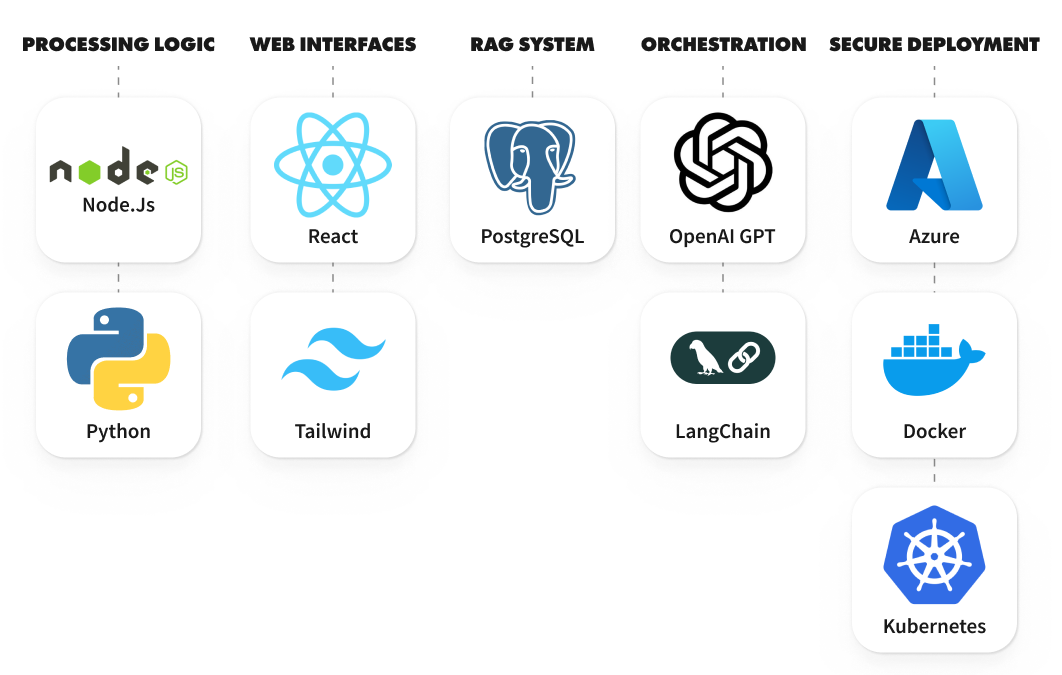
Architectural evolution
The client’s platform has undergone a complete transformation in its architecture. Initially, it was a straightforward rule-based system built around dashboards, APIs, and document automation services. Today, it has evolved into a hybrid environment that combines deterministic automation with adaptive, agentic AI.
At the core, .NET and Python microservices drive processing logic, while React and Tailwind power the web interfaces. PostgreSQL remains the backbone for structured data, complemented by vector databases that support semantic retrieval for the RAG system. OpenAI GPT models, together with LangChain pipelines, enable reasoning, orchestration, and workflow adaptation. The platform is hosted on Azure, with Docker and Kubernetes ensuring scalability, resilience, and secure deployment.
Technology Solutions
- Adopting RAG combined with GPT-based models with a curated knowledge base for accurate, context-specific answers to simplify the cross-country shipping process.
- Using LangChain to orchestrate GPT-based reasoning workflows and pipeline logic for dynamic responses.
- Using modular API connectors to integrate agents with ERP systems, carrier platforms, and communication tools for automated execution.
- Using .NET & Python microservices to drive core processing logic and AI computations.
Value Delivered
- Reduced manual review time by nearly 64%, thanks to using document classification models to automatically recognize customs declarations, VAT forms, and invoices.
- Reduced the number of customer inquiries by more than 55% thanks to automated SMS and email notifications.
- Fully automated carrier selection thanks to an AI-powered carrier selection engine that evaluates cost, delivery time, historical performance, and customer preferences.
- Improved transparency and customer satisfaction.
- Reduced operational costs through intelligent automation.
